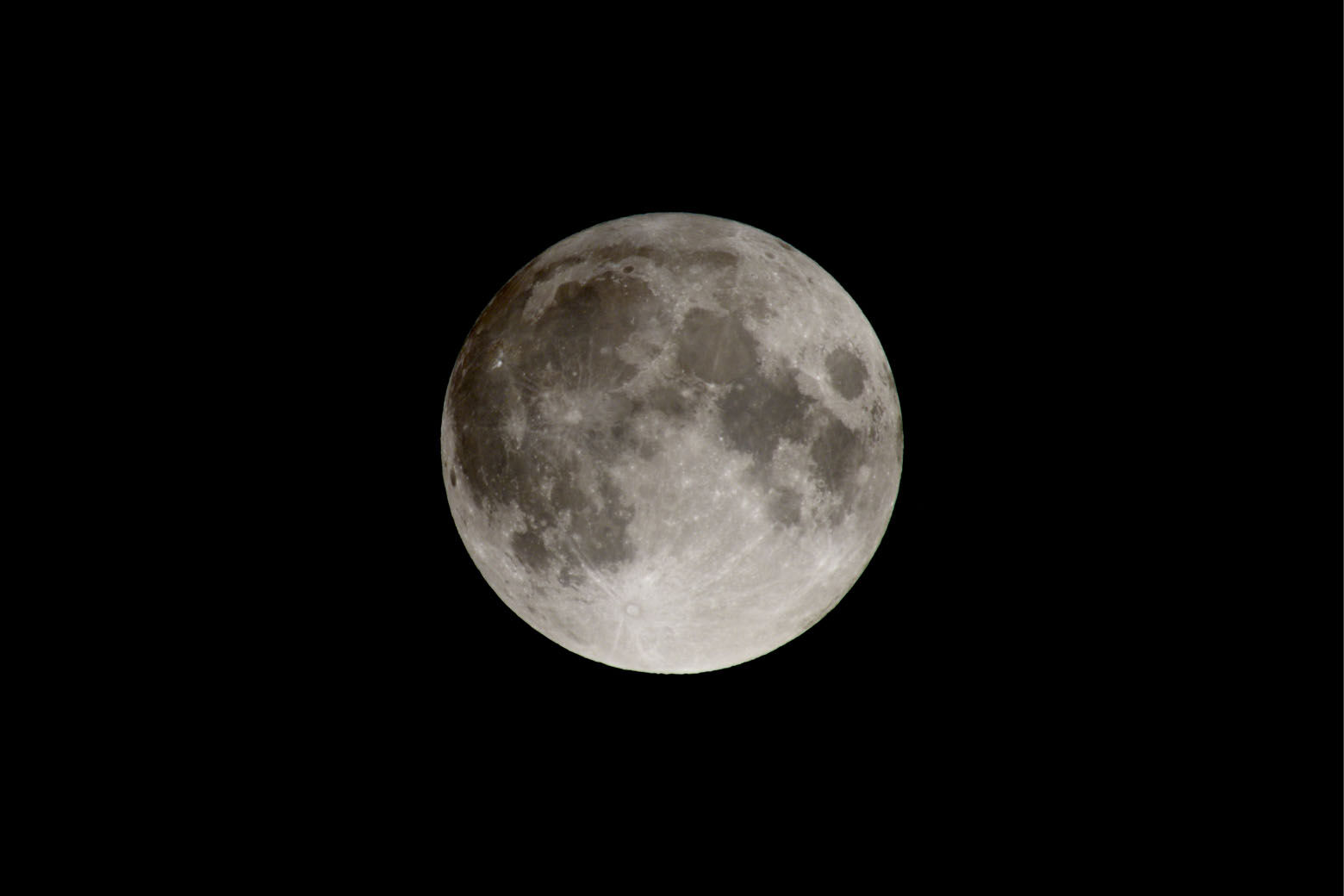
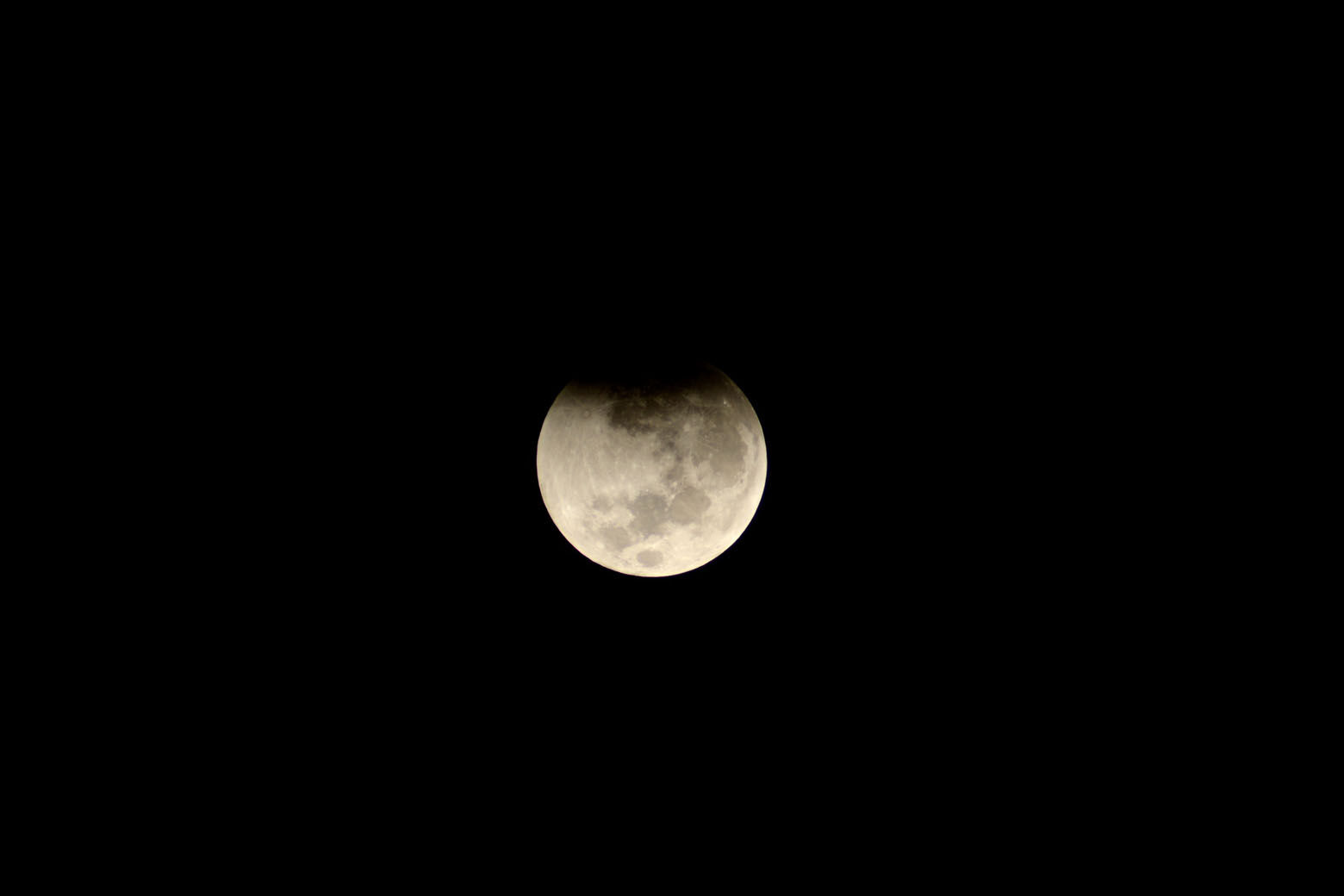
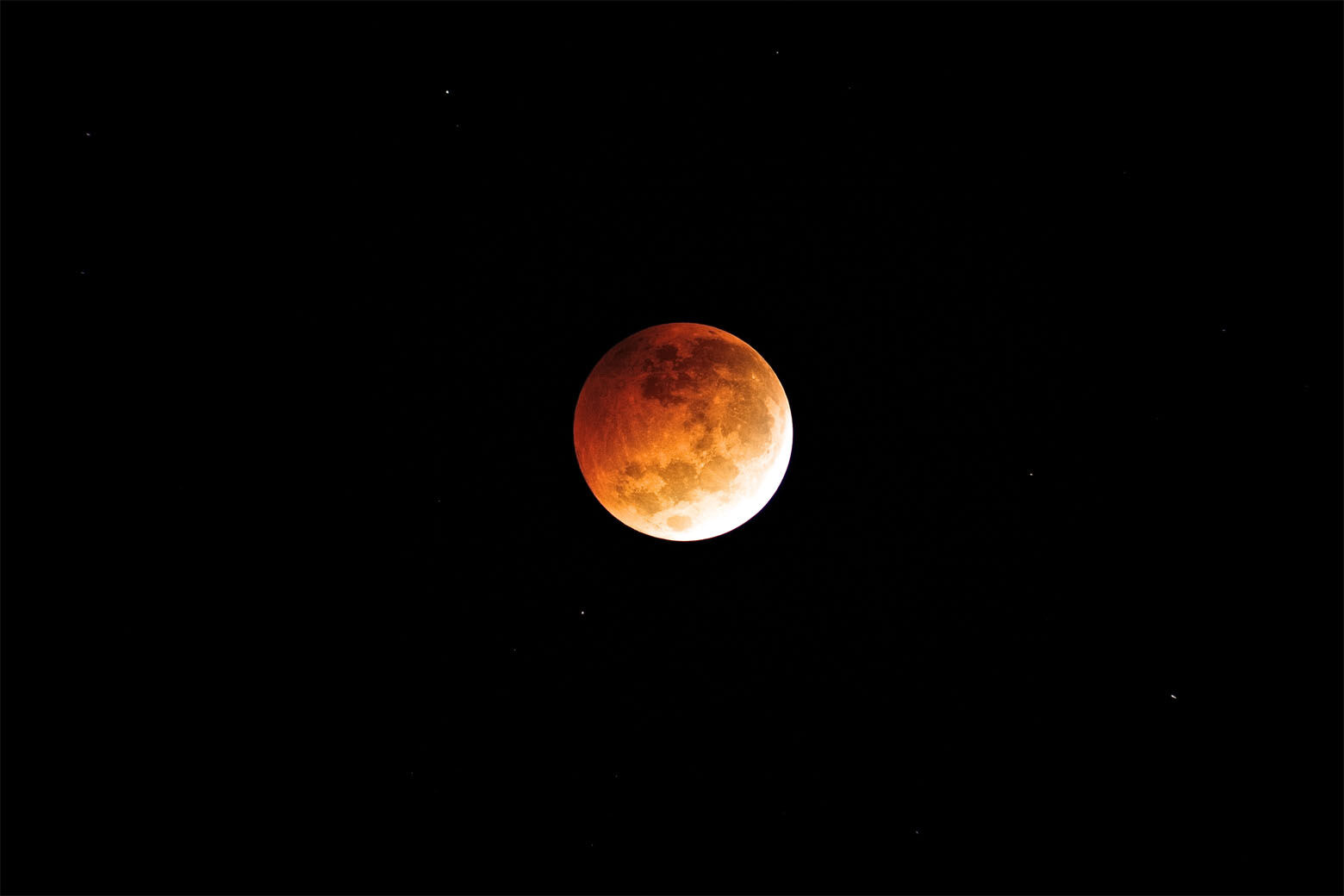
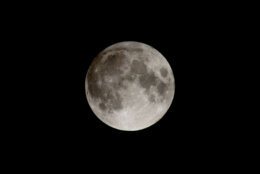
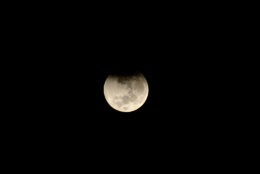
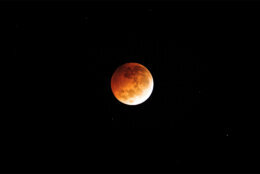
On Thursday night, a lot of humans across the planet will get to experience the longest partial lunar eclipse to occur since Feb. 18, 1440.
The Full Beaver Moon will be in the Earth’s shadow for a total of 21,693 seconds (about six hours and two minutes). Humans will have to wait until Feb. 8, 2669 until this happens again.
There are a number of factors that combine to make this partial lunar eclipse so long, and you can read about them as explained by my friend, astronomer Ethan Siegel.
For moon watchers in the D.C., Maryland and Virginia area, the eclipse occurs overnight, starting on Nov. 19 at 1 a.m. EST, when the moon enters the Earth’s outer shadow, the penumbra.
Observers may see some slight shading at the upper left of the moon during this penumbral eclipse phase, but the Earth’s dark umbral shadow will become visible at 2:19 a.m. EST.
This begins the partial eclipse phase, and observers will see more and more of the moon’s disk covered by our planet’s shadow.
As the Earth’s shadow moves across the moon, at some point observers will begin to notice the appearance of a reddish or copper-penny color on the moon. This color is caused by sunlight passing through our planet’s atmosphere and illuminating the moon’s surface. Astronauts on the moon would see a red ring of light around the entire circumference of our planet as well as a solar eclipse.
Scientists have used total lunar eclipses to study our planet’s atmosphere as has the Hubble Space Telescope to help develop a technique to search for habitable planets.
The maximum or greatest eclipse occurs at 4:03 a.m. EST, when the Full Beaver Moon is 97% covered by the Earth’s umbra.
The bottom of the moon will have a small area of white light — 3% to be exact — while the rest of the moon will be the reddish-copper-penny color. I expect this to be a stunning sight for us to see, especially if you have binoculars to help enhance the view.
The partially eclipsed moon will be in a star-filled sky toward the West, and observers may notice a cluster of stars just above the moon. This is the famed Pleiades, or Seven Sisters star cluster.
To the left of the moon, Orion the Hunter will be resplendent as will the brightest star in the night sky, Sirius. Be sure to take in the whole sky at this point in the eclipse.
The Earth’s umbra will move off the moon to end the partial eclipse phase at 5:47 a.m. EST, and the penumbra shadow does so at 7:04 a.m. EST to end the eclipse.
This lunar eclipse is one that you should try to photograph because of the moon’s colors and the surrounding stars at greatest eclipse. Just about any camera on a tripod, including a smartphones or tablet, is capable of getting astropics of this event and Mr. Eclipse, retired NASA astronomer Fred Espenak, provides some great tips on how to do so.
For smartphones and tablets, try taking multiple pix in wide-angle and zoom using night or time exposure mode. If you have an Apple iPhone, download the free Nocturne app from Unistellar which should get some amazing astropics of the sky at greatest eclipse.
Cloud cover is a concern, but the National Weather Service is forecasting fairly clear skies at greatest eclipse. Believe it or not, clouds can add to the overall beauty of astropics, so don’t let partial cloud cover keep you from viewing and photographing the eclipse. If it is cloudy, you can tune in online via the Virtual Telescope website starting at 2 a.m. EST.
This eclipse can be seen from anywhere in the D.C. area, but the best view will be from a location free of streetlights and other light pollution. With the moon in the West about three fist-widths above the horizon at greatest eclipse, buildings and trees should be avoided in order to get the best overall sky view possible.
I know this eclipse is on a school and work day, but set the alarm to try to take a peek at greatest eclipse, even if it is through a West facing window. You’ll be glad you did.
Follow Greg Redfern on Twitter @skyguyinva and his daily blog to keep up with the latest news in astronomy and space exploration. You can email Greg at skyguyinva@gmail.com.







